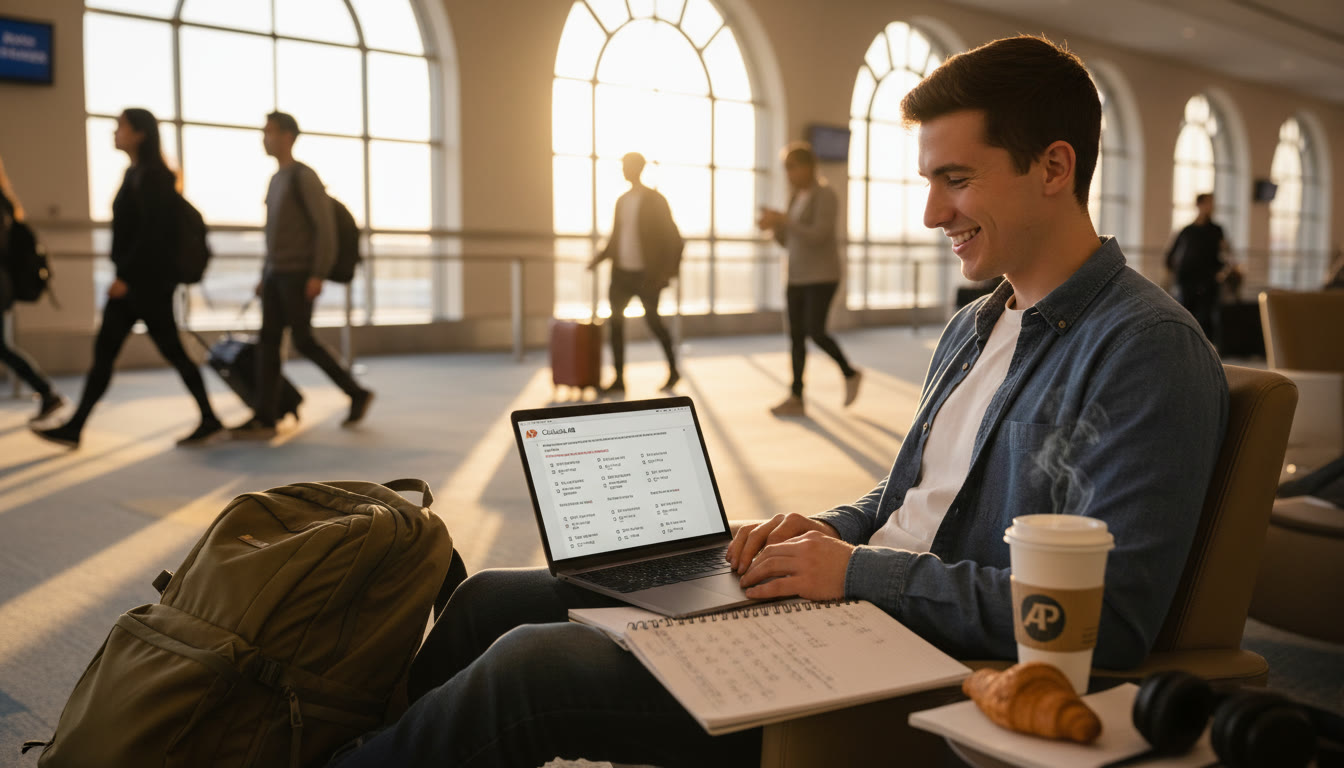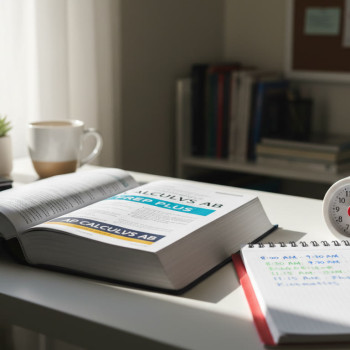Why Travel and Time Zones Matter for AP Students
Travel is normal for a lot of students—sports trips, family visits, study-abroad semesters, and even moving between time zones for school. For AP students, though, travel adds an extra layer of complexity. AP exams follow strict local start times, studying is cumulative, and your brain’s rhythm matters more than you might think. This post walks through why maintaining rhythm matters, how to manage sleep and study across time zones, and practical tools you can use leading up to exam day. We’ll weave in real-world examples, a few comparisons, and sensible routines you can actually stick to. And yes—there’s a natural spot where Sparkl’s personalized tutoring can be a helpful boost when you’re on the move.

How Time Zones Affect Your Brain and Performance
When you cross time zones, two things shift: your external clock (local time) and your internal clock (circadian rhythm). Your internal clock dictates when you feel sleepy or alert, when your hunger spikes, and when your memory encoding works best. For AP exams and heavy study sessions, being out of sync can mean slower thinking, more mistakes, and more stress.
Think of your brain like an orchestra. If the conductor (your circadian rhythm) is off, the whole piece sounds messy—even if every musician knows their notes. For AP success, we want the conductor in tune.
Short- and Long-Term Effects
- Short-term: grogginess, trouble focusing, decreased working memory—bad for timed sections and free-response essays.
- Long-term (if rhythm stays disrupted): chronic sleep debt, increased anxiety, and lower retention of complex concepts across weeks of study.
Before You Travel: Plan Like an AP Pro
Preparation reduces panic. If you’re traveling during AP season—or even for a spring break that overlaps with review week—small planning moves pay big dividends.
Checklist: One Week Before Travel
- Confirm your AP exam local start time and test center location (AP exams are given at specified local times—know when your exam starts in the local time where you’ll be testing).
- Make a study schedule that’s flexible: slot high-focus tasks for when you’re most alert (mornings for many students) and lighter review for low-energy windows.
- Pack a focused study kit: printed practice problems, charging cables, earphones, a reliable timer, and a small notebook for active recall notes.
- Download the relevant digital AP exam app or make sure your laptop/tablet is updated if you’ll be taking a digital practice exam.
Adjusting Your Clock Gradually
If you’ll cross more than two time zones, start shifting your sleep schedule 30–60 minutes earlier or later each night in the days before travel. These incremental moves reduce jet lag and make the transition gentler. For example, if you normally sleep at 11:30 p.m. and you’ll be flying three zones east, aim to sleep at 10:30 p.m. the night before, then 9:30 p.m. two nights before, and so on.
During Travel: Practical Rhythm Hacks
Travel days can be chaotic, but they’re also prime opportunities to set rhythm. Small choices during the trip influence how quickly you adapt when you land.
On the Plane or Train
- Use your destination’s local time right away—set your watch and your devices to local time. This mental cue helps your brain start shifting.
- If you need sleep during the trip, use sleep tools: a comfortable neck pillow, eye mask, and white-noise earphones. Schedule short naps of 20–90 minutes depending on how long the trip is and how your body usually reacts.
- Avoid long study marathons mid-flight. Instead, do light, active review: flashcards, quick outlines, and a 20–30 minute mixed-practice set to keep concepts warm.
At Arrival
When you arrive, prioritize local light exposure and movement. Sunlight is the most powerful reset button for circadian rhythms. A brisk 20–30 minute walk outside, timed appropriately, helps sync your internal clock.
Study Scheduling Across Time Zones
Once you’re at your destination, how do you plan study sessions so they’re efficient and realistic?
Use the Two-Block Method
Two deep-focus blocks per day is a sweet spot during travel: one in your natural high-alert period, and one in the next best window. For many students that looks like:
- Block 1 (60–90 minutes): Core subject work—practice exams, problem sets, or timed essays.
- Block 2 (45–60 minutes): Active recall—flashcards, condensed notes, and concept maps.
Between blocks, rest or do low-stakes review (videos, light reading). Keep total focused study to a realistic maximum—travel fades concentration faster than being at home.
Sample 24-Hour Travel Study Schedule
| Local Time | Activity | Why It Works |
|---|---|---|
| 7:00–7:30 AM | Sunlight walk + breakfast | Resets circadian rhythm; fuels the brain |
| 8:00–9:30 AM | Deep study block (practice problems) | High cognitive demand aligns with morning alertness |
| 10:00–11:00 AM | Light review or class prep | Consolidates morning learning |
| 2:00–3:00 PM | Second focus block (timed essay or mixed practice) | Gentle cognitive load during afternoon peak |
| 6:00–8:00 PM | Relaxation + light review | Prepares the brain for sleep; avoids overstimulation |
Exam Day When You’re Away from Home
Exam day away from familiar surroundings is a test of logistics as much as knowledge. Here’s a calm, step-by-step approach to make the day predictable and secure.
48–24 Hours Before
- Reconfirm the test site and local start time. AP exams are administered at set local times—know exactly when you must be there.
- Prepare identical physical exam materials you’d use at home: allowed calculators, pencils, photo ID, and any permitted reference cards.
- Practice a short, timed section at the local time you’ll take the exam to help your brain rehearse performing at that hour.
Morning of the Exam
- Eat a familiar, balanced breakfast 90–120 minutes before test time—include protein and complex carbs for steady energy.
- Get sunlight exposure and avoid heavy screens just before the exam to minimize digital eye strain.
- Arrive early at the test center to acclimate to the space and prevent stress from last-minute travel hiccups.
Practical Tools and Tech to Keep Rhythm
Technology can be an ally when used intentionally. Here are tools I recommend and how to use them wisely.
Apps and Devices
- World Clock / Time Zone apps: keep multiple clocks for home, destination, and exam city visible on your lock screen.
- Sleep trackers: use them to monitor sleep quantity and consistency—focus on regularity more than perfect numbers.
- Calendar with local-time toggles: schedule study blocks and alarms in the exact local time of your exam site to avoid mistakes.
Low-Tech Strategies That Work
- Paper flashcards for quick review—no screen fatigue.
- Physical printed practice tests—helps in digital exam weeks to get comfortable with timing and format.
- Sticky notes with micro-checklists—great for last-minute concept refreshers without stress.
Mindset: Adaptability Beats Perfection
Travel rarely goes exactly to plan. Flights delay, family schedules shift, and hotel Wi-Fi can be spotty. The best students I’ve seen make a distinction between what they can control (study quality, sleep, arrival time) and what they can’t (weather, traffic). That sway toward adaptability reduces anxiety and improves performance.
Use a simple mantra when things go sideways: “One step, one block.” Put your energy into the next concrete action: a 25-minute study sprint, a 20-minute walk, or organizing your exam materials. This creates momentum and lowers overwhelm.
How Personalized Tutoring Can Help When You Travel
When routines are disrupted, targeted support helps you keep progress. Personalized tutoring—like Sparkl’s 1-on-1 guidance—can be especially useful in three scenarios:
- Short notice travel: a focused tutoring session can prioritize high-impact concepts and create a compact, personalized study plan you can follow on the road.
- Time zone adjustment: tutors can shift session times to match your new schedule and help you rehearse exam performance at the exact local hour.
- Adaptive review: expert tutors use diagnostic insights to identify weak spots quickly so your travel study time is efficient and targeted.
When used sparingly and strategically, personalized tutoring complements your independent work and keeps your momentum steady even when life pulls you in other directions.

Examples and Case Studies: Two Students, Two Paths
Concrete stories help make abstract advice tangible. Here are two archetypal students and how they navigated time zone challenges.
Case A: Maya—Sports Travel and AP Calculus BC
Maya travels for weekend tournaments across two time zones during April and May. She’s worried about staying sharp for AP Calculus BC. Her strategy:
- Shifted sleep 30 minutes earlier two days before each tournament.
- Used the two-block method: a morning problem set before warm-ups and a 45-minute review block after practice.
- Booked two 1-on-1 tutoring sessions the week before each tournament to reinforce hard integration techniques and get a tailored practice set to work through on the bus.
Result: She stayed calm, preserved her problem-solving speed, and felt confident on test day.
Case B: Jordan—Study Abroad and AP English Language
Jordan studied abroad and faced a five-hour time difference. His exam was scheduled back in the U.S. local morning. Strategy:
- Two weeks before travel, Jordan gradually shifted his nightly routine back toward his home timezone—30–45 minutes earlier every three nights.
- He used timed essay practice at his target test time to rehearse being alert for long written responses.
- During the last week, he scheduled evening tutoring sessions timed to his future test morning to practice pacing and real-time feedback.
Result: Jordan reported lower anxiety and better essay pacing on exam day—because he had rehearsed performing at that hour repeatedly.
Common Pitfalls and How to Avoid Them
- Overstudying right before sleep: avoids consolidation. Replace heavy study with light review or a calming routine.
- Counting on caffeine to overcome rhythm mismatch: short-term fix but harms sleep and increases jitter—use sparingly and early in the day.
- Assuming the exam center will adjust: AP exams are administered at set local times. Confirm time and location well in advance and plan travel accordingly.
Final Two-Week Checklist for Travel and AP Rhythm
| When | Action | Why |
|---|---|---|
| 14–7 days before | Start gradual sleep shifts if crossing 2+ time zones | Reduces jet lag and preserves cognitive sharpness |
| 7–3 days before | Schedule two targeted tutoring sessions (if needed) and confirm materials | Clarifies weak spots and builds confidence |
| 2–1 days before | Rehearse exam at local time; pack a study kit | Creates predictability and reduces stress |
| Exam day | Sunlight, balanced breakfast, arrive early | Optimizes alertness and performance |
Closing Thoughts: The Power of Rhythm Over Perfection
AP success isn’t about perfect study days; it’s about consistent rhythms you can follow even when life changes. Travel and time zones are solvable problems—approached with the right mix of planning, flexible routines, and targeted support. If you need help turning a chaotic travel week into a predictable, high-quality study sprint, personalized, 1-on-1 tutoring that adjusts to your schedule can be a game-changer. Tutors can help compress review into the highest-impact work, rehearse exam timing in your new time zone, and create a tailored plan that respects the reality of travel.
Pack smart, plan gently, and practice at the hour you’ll perform. When your body, mind, and schedule sing together, you’ll bring your best to the AP exam—no matter where in the world you are.
Quick Resources Recap
- Two-block study routine: one deep morning block + one afternoon block.
- Gradual sleep shifts if crossing multiple time zones.
- Sunlight and movement on arrival for quick circadian reset.
- Targeted tutoring sessions for high-impact, on-the-go review.
Good luck—travel safely, study smart, and keep your rhythm. You’ve got this.
















No Comments
Leave a comment Cancel